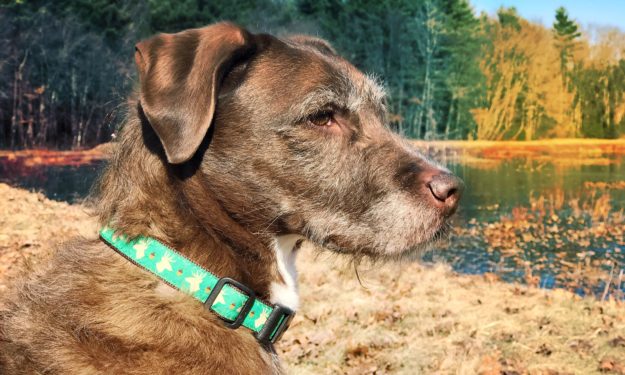Our Top Pet Safety Tips & Dangers During Fall

Written by Marissa Ann Portillo, BS, RLATG, CM
Autumn is the time of year when we all start to get some relief from the scorching summer and finally enjoy comfortable time outdoors. With the change in season, comes different things to beware of with your pet in mind. We want all pets to have a safe and fun New England Fall.
Wildlife: Let Them Wonder, Not Wander
As the temperatures begin to cool, there are many different species of animals that become more active. When outdoors, it is very important to be aware of what other animals may be in the vicinity. During dawn and dusk, many animals are making their way to and from their food sources. Keeping a close eye out for coyotes will help keep you and your beloved pet safe. We even see coyotes in Natick, an industrialized city!
Other creatures your dog may be enticed to chase or start a brawl with include:
- Deer: a doe may attack if her fawn is threatened, or your dog may run deep into the woods after a deer.
- Foxes: not known to attack, but may also tempt your dog to chase after.
- Porcupines: quills, lots of quills.
- Wild Turkeys: can be quite aggressive and are known to not back down from a fight.
- Fisher Cats: have been known to prey on outdoor domestic cats, though not many dogs.
Our hospitals are located in areas where these animals coexist with the surrounding human habitat, but interactions are inevitable. Keys to safety are staying in well-lit areas, keeping your dog leashed and your cat inside, always announcing your presence with noise (i.e. carrying jingling car keys), and staying away from game trails during peak hours of dawn and dusk. If your pet has an interaction with wildlife, we are always here for your medical needs.
Itchy, Sneezy, Runny Fall Allergies
October is a big allergy month for many pets. Being aware of the signs of increased allergies can help you catch symptoms early and treat them appropriately. Just as with humans, many allergy symptoms can be very frustrating for pets.
The most common symptoms of seasonal allergies with pets are:
- runny/itchy eyes
- itchy/flaky skin
- redness around eyes, rashes, or hot spots around head, hips, or chest
If you notice these symptoms, it’s important to seek the advice of a veterinarian as treatment for allergies can help prevent further complications; Also, these symptoms may be a smaller sign of a bigger problem, so the medical guidance of a doctor can help determine that.
Pumpkin Spice Everything!?
It may be tempting to share your delicious pumpkin spice treats with your pet, but we recommend steering away from sharing these foods. Some pumpkin spice goods contain coco powder and/or nutmeg which are considered toxic to dogs. If you want to share the season with your pet, we suggest purchasing pet-specific treats from your local pet store or plain canned pumpkin (not the pie filling!) These are a safe options for pets and allow them to experience all the flavors of fall with you!
Check out our Pumpkin Peanut Butter Balls recipe for a pet-safe yummy treat!
Yard Work Dangers
Chemicals: With the season change, many folks choose to treat their yards with a variety of fertilizers, insecticides, pesticides, or snail bait. Many of these items are listed as toxic to animals, including your pets. If you choose to treat your yard with any chemical or fertilizer that is toxic to animals, please follow the instructions regarding how long to keep your pet away from these areas.
Mulches: Be careful in your selection of mulch, especially if using cocoa mulch which contains theobromine, a highly toxic and lethal chemical for pets if ingested. Mulches and other damp areas in your yard may also invite mushrooms which can also be toxic to pets.
We always recommend using pet-safe alternatives when available to avoid the potential for contact with your pet. If you think your pet may have come into contact with a fertilizer, lawn chemical, or any other toxin, please make your way to the nearest emergency room. Time is always of the essence when toxins are involved and it’s vital to seek treatment immediately.
Dog Parks
‘Tis the season for increased attendance at the local dog parks! The comfortable temperatures and crisp evenings make autumn a great season to bring your pet to the park! Please refer to our blog about dog park safety for further advice.